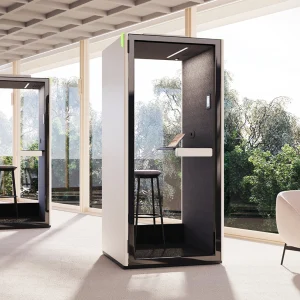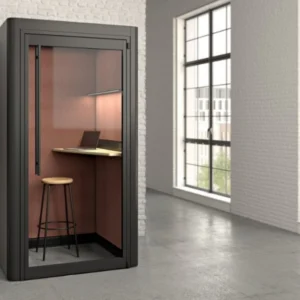Opened in 2009, the 29,656 square feet facility at the North Carolina Botanical Garden features a geothermal system for heating and cooling, solar panels, rainwater collection cisterns and non-toxic construction materials.
Designed by Frank Harmon Architect of Raleigh, the new Education Center expresses a sense of place and celebrates relationships between humans and nature through the integration of indoor and outdoor spaces. Open breezeways, comfortable porches, natural light in every room, beautiful native plant landscaping, and educational exhibits inform, delight, and invite visitors to the university’s Conservation Garden.
The building’s green architecture exemplifies a positive union between natural and built environments and serves as a model of sustainable design for UNC and the state of North Carolina. The design creates a family of eco-friendly buildings, gently composed on a wooded hillside, drawing energy from the sun for heating, hot water and lighting.
The Education Center consists of three major sections connected by covered breezeways. All systems and materials have been designed to minimize environmental impact and support human health. Visitors are greeted by the Eleanor Smith Pegg Exhibit and Information Hall located in the central area of the building, as they enter the garden through the large breezeway. The main floor of this wing houses a gift shop and plant sales area as well as the Green Gardener Reference Room, a gallery for art exhibits, and a special room for garden volunteers. The upper floor provides space for administrative offices and production of Garden literature.
The West Wing of the centre features the Reeves Auditorium, a large multipurpose space for workshops, conferences, special events and dinners, flower shows, and meetings of garden clubs and other groups interested in conservation, outdoor education, and horticulture. This wing also includes a seminar room, special library collections room, and a catering kitchen.
The East Wing houses staff offices and classrooms for school children, horticultural therapy clients, and others enrolled in the garden’s programmes. A planned nearby outdoor classroom will encourage learning in a woodland setting near Meeting-of-the-Waters Creek.
Photovoltaic panels capture solar energy and generate 20% or more of the power used in the building. Geothermal wells circulate water through underground pipes taking advantage of consistent temperatures that are ‘cool’ in the summer and ‘warm’ in the winter. Stone cisterns located near the corners of the building collect rainwater from the roof. All gardening activities will be based on rainwater instead of regional drinking water supplies.
Rainwater is retained in ponds and swales. By slowing the water down and letting it filter through vegetation, pollutants are removed and most of the water is retained on the site. Clerestory windows provide natural light throughout the building. The orientation and overhang allows direct light to enter in the winter and shades the building in the summer. Moreover, the building site was chosen to protect existing vegetation, minimize earth moving, and make the most of solar heating and cooling design.





